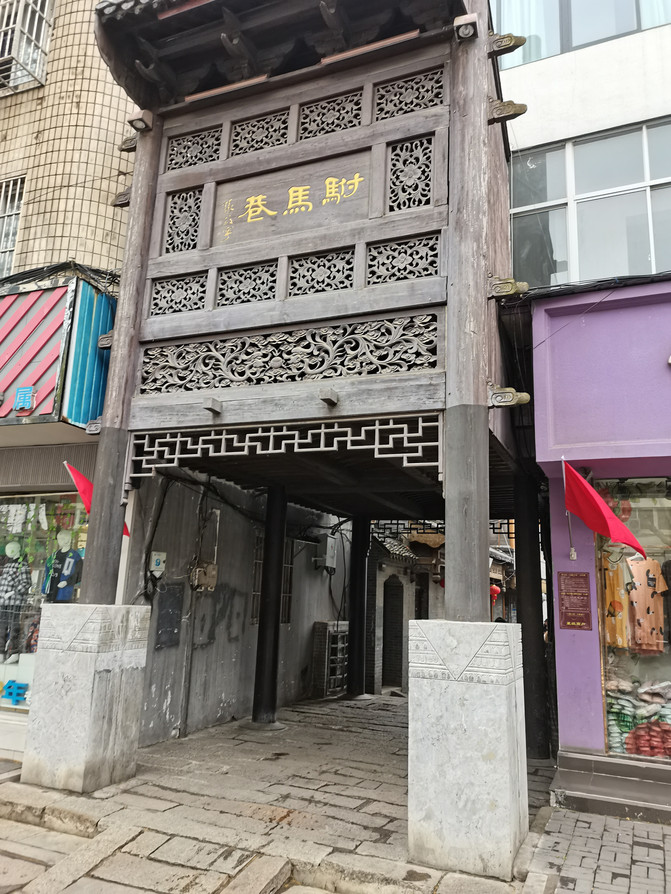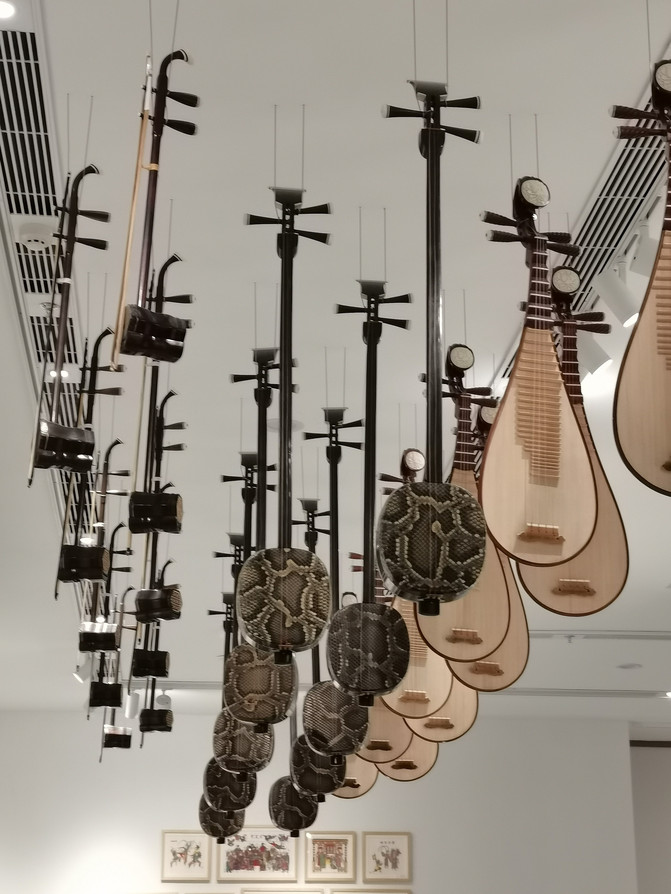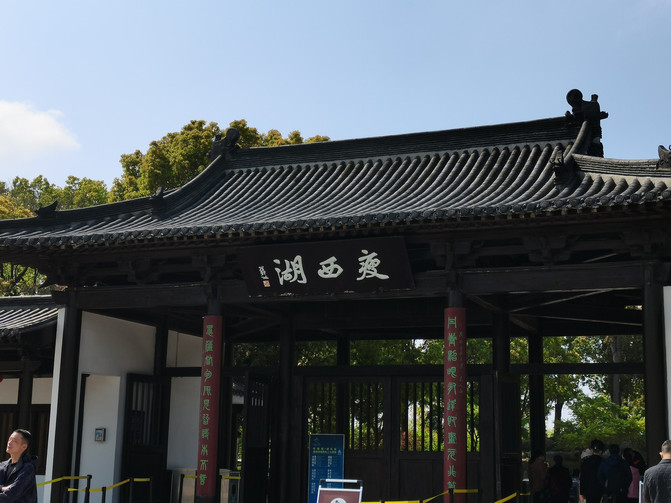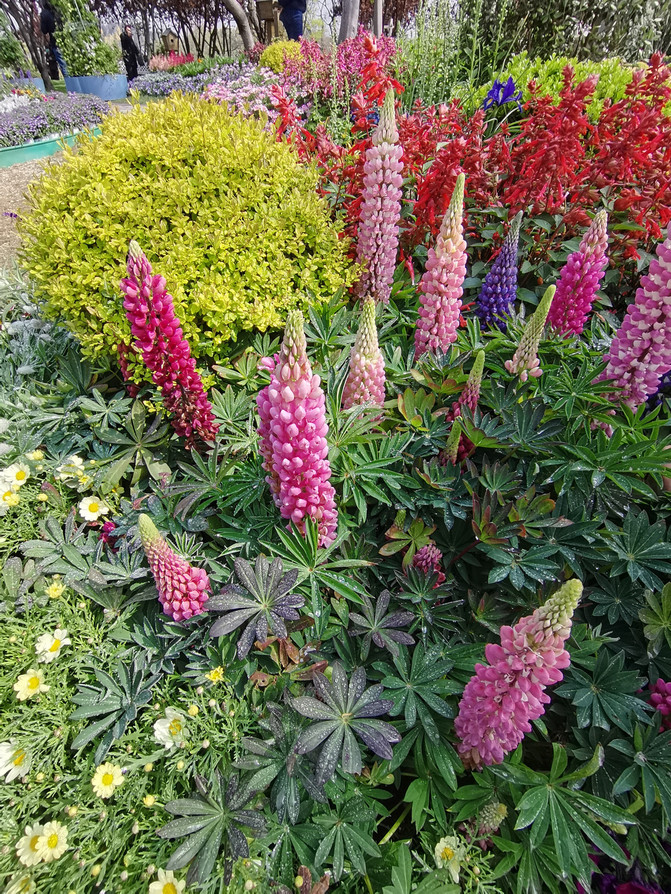Fireworks fly to Yangzhou in March, Huaian and Yangzhou for six days




We went on a yellow cartFormer Residence of Zhou Enlai, the former residence is located in the Laocheng District of Huaian City. It is a private house in northern Jiangsu built from Xianfeng to Guangxu from the Qing Dynasty. It is a simple and elegant house with blue bricks and gray tiles. He was born here and spent 12 years. He never came back after leaving Huai 'an. In the former residence, you can see the room where he was born, the bedroom of his family, etc. Everything is just like the place where he was born in the film and television series, and it still looks as it is. In addition, through various graphic materials and physical exhibitions, you can learn about his physical status.
The first thing I saw was his reading office. When he was 5, he followed his ancestral instructions and entered the family school to study. Then he went to his parents 'room, the east wing of the room was the place where he was born. Then you can visit the childhood family affairs and hometown exhibition, and the life story exhibition room in turn to learn about his and his wife's stories. Take a look at his ink stele gallery, kitchen and other attractions.
There are several landscapes not to miss during your visit. First, there is an ancient well behind the pavilion, and there is a vegetable field in front of the kitchen not far from the well. You can try to draw a bucket of water from the old well. This is how he used to draw water to irrigate the vegetable field. Second, in the backyard, there is a first-class plum tree, and the plum blossoms symbolize his character. Third, there are also two century-old trees in the former residence, one is an elm tree and the other is a Guanyin willow





Have lunch nearby at noon. A large bowl of wonton made of meat and shepherd's purse stuffing is 12 yuan. In the afternoon, Zhenhuai Lou

Nearby are Huai 'an Prefecture Administration and China Water Transport Museum
Huaian Fushu, its lobby size is the highest in the country, with an area of more than 500 square meters. Huai 'an Prefecture Office is a symbol and witness of Huai' an's historical status, and its scale is huge.
Huai 'an Prefecture is one of the two remaining prefectures in the country. It covers an area of more than 50,000 square meters and has more than 50 original houses and more than 600 rooms. The main hall of Huai 'an Prefecture Administration is 10 meters high and covers an area of more than 500 square meters. It is grand and majestic. It is one of the main halls of the government administration in the country.
Huai 'an Prefecture is built in three roads: East, Middle and West. The front section of the central section is an office, mainly built with: Yimen, Jieshifang, Zhengtang, Liuke, Ertang, etc.; the back section of the middle road is the residence place for the prefect and his family, mainly built with: Shangfang, east and west wing rooms, Qingyu Tang, etc.; The east road is a welcoming banquet venue, mainly built with: stage, Hou Temple, Baohan Hall, Tenghua Hall, Jixian Hall, Back Garden, etc.; the west road is the military arrest hall, mainly built with gate, Yimen, main hall, second hall, upper room and third class rooms, warehouse, postal department, post station and other buildings.
China Water transport Museum

We didn't enter and rode our bike to the Zhou Enlai Memorial Hall.
Zhou Enlai Memorial HallIt is located in the ancient city of "Lao Huai 'an", less than 2 kilometers away from Zhou Enlai's former residence. In this museum area, which has won many awards in the national architecture industry, the corners and height of each building have the symbolic meaning of remembering Zhou Enlai. The overall feeling is solemn and solemn. Here, you can learn about Zhou Enlai's deeds and see many precious objects.
The main buildings of the museum area are arranged on the central axis running from north to south. From south to north, there are the viewing platform, the main hall, the annex hall, the bronze statue of Zhou Enlai and the imitation of the Xihua Hall in Zhongnanhai, Beijing. The main museum and auxiliary museum are located on a peninsula surrounded by water on three sides in the middle. Together with the Xihua Hall at the northernmost end of the central axis, they are the three main venues visited by tourists.
The main museum is divided into three floors. The first floor is an exhibition hall, which introduces Zhou Enlai's life with rich and detailed pictures, objects and TV displays. The second floor is the viewing hall, with a 4.7-meter-high full-body sculpture of Zhou Enlai's white marble standing in the center. The third floor is a viewing platform, which can overlook the museum area and overlook the ancient city of Huai 'an.
The annex is the exhibition hall of Zhou Enlai's life and achievements, which has two floors. On the first floor, there is a celebrity calligraphy and painting hall and a film and television hall. The calligraphy and painting hall displays calligraphy and painting works donated by famous people and painters at home and abroad to the Zhou Enlai Memorial Hall. The film and television hall mainly shows film and television films about Zhou Enlai's life achievements.


After that, I took the You2 Road to Hexi Ancient Town, bought some food, and took the small train back to the hotel.


the third day, Take the 5-way to Huaian East Station, take the high-speed train to Yangzhou East, and take the bus straight to the Grand Canal Museum, where you can store bags, Grand Canal Museum
It's really shocking. There are many museums, the best ones are Hall 2 and Hall 3. It's very strenuous, so it's best to bring something to eat.China Grand Canal Museum, referred to as "Yunbo" and its full name is "Yangzhou China Grand Canal Museum". It is located on Kaifa East Road, Guangling District, Yangzhou City, Jiangsu Province (about 150 meters northwest of Sanwan Wetland Park). It covers an area of 200 acres and has a total construction area of about 80,000 square meters. It is affiliated to the Department of Culture and Tourism of Jiangsu Province. It is a local modern comprehensive museum integrating cultural relics protection, scientific research exhibitions, and leisure experience. It is a landmark project in the construction of the Grand Canal National Cultural Park.





After watching it, I went back to the hotel to rest. go at nightDongguan Street, queuing up to buy glutinous rice dumplings, shopping all the way, wentPishi Street, ride the electric car back to the hotel



the fourth day, get up early to have morning tea and ride to Slender West Lake. Because I went early and there were not many people, I took a taxi back after shopping.
Slender West Lake is a long and narrow river. Here, you can either walk along the river to enjoy the natural beauty, or walk into pavilions and pavilions to taste the poems, paintings and ink treasures of literati and literati of past dynasties. You can also sit on a boat and feel the Qianlong Emperor's leisurely mood of touring the lake.
The entire Slender West Lake Scenic Area is very large. It starts from Dahongqiao in the southeast of the scenic area, and goes north along the lake to Guanyin Mountain. It passes through dozens of scenic spots on the way. There are 4 gates in the scenic area, southeast, northwest, and usually you enter from the south gate on Dahongqiao Road to start your tour.
Slender West Lake is a famous lake garden with beautiful natural landscapes. The green willows here are shaded in spring, accompanied by camellia, pomegranate, rhododendrons, peach and other flower trees, attracting tourists from all over the world to visit and enjoy flowers every year. For thousands of years, countless literati and literati have lingered here, reciting poems and painting, leaving behind many calligraphy treasures and stories, and also built many scenic buildings according to local conditions.
Wuting Bridge is the symbol of Slender West Lake and has a history of more than 200 years. There are five wind pavilions built on the bridge. Every full moon night, each of the fifteen bridge holes under the Wuting Bridge contains a moon. The 24th Bridge is another famous attraction in the scenic area. It comes from Du Mu's poem,"The 24th Bridge is bright and bright on the night, where does the jade man teach to blow the whistle?" The original bridge no longer exists, but now it is a rebuilt bridge.
This was also the place where Emperor Qianlong went to Jiangnan in the Qing Dynasty. The architectural landscapes such as the Dahongqiao Bridge, Diaoyutai, White Pagoda, and Xichun Terrace we see today have left behind stories that are inseparable from Emperor Qianlong.







I went to Grandma Beijing for lunch at noon and took the high-speed train back to Huai 'an in the afternoon. I didn't expect that high-speed train tickets would be difficult to buy on Friday, so I waited longer
the fifth day, Early up the north-south demarcation line sign park--Huaian City Museum--Former site of the Jiangsu and Anhui Border Region Government--Qingyan Garden--Eating Huai 'an Banquet--Chuxiu Garden--Li Canal Cultural Corridor
demarcation lineThe landmarks on the bridge will be integrated with an old historical bridge pier in Huai 'an (the planned "Red Bridge"). The bridge was built in the 1930s and has witnessed the vicissitudes of Huai' an. The integration of landmarks with old bridge piers with certain historical significance adds urban characteristics and deepens cultural connotation. The "appearance" of the marker is a spherical shape, located in the middle of the Red Bridge and also the center line of the river. With a spherical shape as the parent body, it is divided into two hemispheres: the north side is gradually cold and the south side is gradually warm, implying the northern and southern climate characteristics of the earth. Pedestrians can walk through the ball and feel the sensory changes across the north-south climate zone.


Huaian City MuseumIt is a comprehensive history museum and a center for cultural relics collection, display and archaeological research. It was established in 1959 and has a rich collection of cultural relics, including ceramics, jade tools, bronzes, coins, calligraphy and painting. In particular, heavy Warring States weapons such as engraved bronzes, bronze carriage ornaments, and double chimneys unearthed from the Warring States Tomb in Gaozhuang in 1978; wood carvings unearthed from the Warring States Tomb in Yunhe Village in 2004



Former Site of the Government of Jiangsu and Anhui Border Region
On November 1, 1945, the Jiangsu and Anhui Border Region Government was established in Huai 'an. It was the people's democratic coalition government of the four major Jiefang District of Suzhong, Northern Jiangsu, Huainan, and Huaibei.
There are two existing courtyards at the former site of the Border Region Government, covering an area of 61 million square meters. There are 48 antique bungalows with brick and wood structures (some of which are two-story buildings) with a building area of 1300 square meters. The 26-room two-story buildings in the North Courtyard are the office locations of the former Border Region Government Communication Office. They are now used to display historical materials of the Border Region Government and Li Yimang's life. They display more than 280 historical photos and 140 pieces of cultural relics and documents, which comprehensively reproduce the Border Region Government's history. The style and great achievements, as well as the glorious fighting life of Li Yimang, Chairman of the Border Region Government. There is also a bronze statue of Li Yimang, a toast place for Li Yimang's ashes, and a hexagonal pavilion designed by Li Yimang himself in the courtyard. The South Courtyard has a total of 22 bungalows in four buildings. It is the offices and conference rooms of the Chairman, Vice Chairman, Secretary-General of the Border Region Government.



Qingyan Park, located in Huaian City, is a well-protected classical garden in Huaian City and a surviving official garden in the history of Chinese water transport. It was built in the 17th year of Kangxi (1678 AD). It was once named Huaiyuan, Zhanyuan, Lingering Garden, and Chengnan Park. In 1991, it was restored to the ancient name of "Qingyan Garden".
Hefang Academy is a very distinctive building in the park. It was built in the 15th year of Qianlong of the Qing Dynasty (1750) and was turned into Xinhua Library. In recent years, it has been renovated and renamed Hefang Academy. Around the Hefang Academy, it was a recreational place for the governor of the river, with stele pavilions and stele corridors built. From these imperial inscriptions, we can understand the hardships of water control and the situation of water transportation. They are a set of valuable historical materials and historical relics for water conservancy.
Qingyan Garden also has Huaixiang Hall, Jiaoyin Hall, Jinlai Yuxuan, Shuixie, Boat Tower and Qianyuzhai




Ride a small yellow car to eat Huaian Banquet


Chuxiu ParkIt is located in the center of the urban area and covers an area of 48 hectares. It is named because it belonged to Chu in ancient times and was a quiet and beautiful place in Huai 'an. Chuxiu Garden was originally a lake and swamp outside the old Qingjiang River. The Qing Dynasty trained naval forces here. During his southern tour of the Ming Dynasty, Emperor Wuzong once drove a small boat to fish here for fun. He accidentally fell into the water. After returning to Beijing, he fell ill and died the next year. Therefore, he left the well-known allusion of "Yuelong Pond". Built as a park in 1958. The water surface in the park is open and changeable, the terrain is undulating, and the scenery is beautiful and elegant. There are 4 major scenic spots and 10 scenic spots. There are also special parks such as a zoo, a rose garden and a children's park, forming a landscape with gardens in the park and scenery in the scenery. pattern. Huai 'an villagers living in Taiwan also donated money to rebuild the Imperial Poetry Pavilion (commonly known as the Dragon Pavilion) in the northwest corner of the park. The pavilion has double eaves on six corners, covered with green flowing glass tiles, and built-in steles, becoming a new landscape in the park.



The Li Canal is the Beijing-Hangzhou Grand CanalThe section of the canal in Huai 'an urban area meanders from the urban area to Huai' an District in the Laocheng District. The Liyunhe Cultural Corridor Scenic Area currently refers to the part from the vicinity of Zhongzhou Island to Yuexiu Bridge. There are green belts along the river. Along the way, there are ancient old houses, emerging urban high-rise buildings, and some exhibition halls to see. It is a good sightseeing route.






On the sixth day, I took the 733 bus for 3 yuan to the airport, which was very small.
Previous Article:Yangzhou will be connected to high-speed rail soon! I can't believe that this Slender West Lake can still be played like this, you can play all day long
Next Article:Yangzhou's Dream City, a romantic serenade in early autumn
